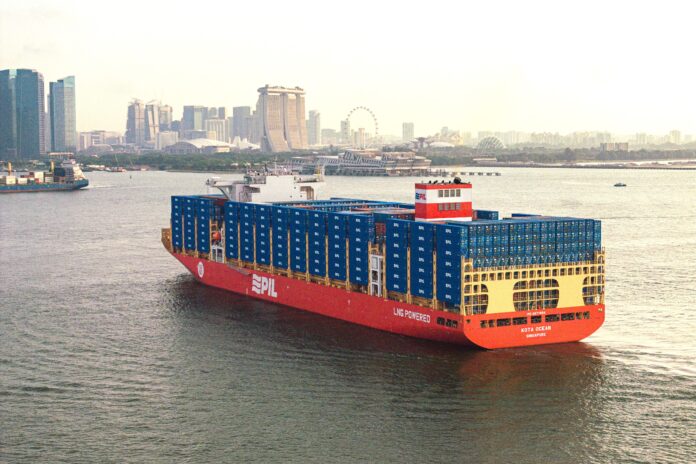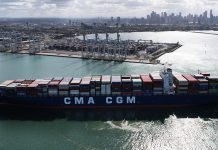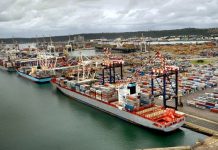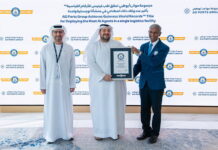
Pacific International Lines (PIL) named its latest 8,200 TEU LNG dual-fuel container vessel, Kota Ocean, at the PSA Terminal in Singapore.
The vessel was named by Ho Ching, Chairman of Temasek Trust, and is the sixth LNG dual-fuel vessel in PIL’s fleet. Kota Ocean is also the second in a series of four 8,200 TEU LNG dual-fuel container vessels, designated as “O” Class, that the company is building.
Lars Kastrup, CEO of PIL, said: “This naming of Kota Ocean represents a significant milestone in our fleet renewal programme, which further enhances our network deployment and operational capabilities to better serve customers. We are delighted to hold the ceremony in Singapore to commemorate SG60, which highlights our ongoing commitment to contributing to Singapore’s maritime industry and future.”
“Kota Ocean is our sixth newbuild LNG dual-fuel vessel delivered and demonstrates our dedication to sustainable shipping. PIL was the first Asian container shipping line to invest in LNG dual-fuel ships in 2022, and we have since ordered 18 new vessels, bringing us closer to our net zero emissions target by 2050, in alignment with Singapore’s net zero goal.”
Operating on PIL’s South West Africa service (SWS), the vessel’s trade route will connect the Far East, from China to Singapore, Ghana, Togo, Nigeria and Ivory Coast.
Kota Ocean joins sister vessel, Kota Oasis, which was delivered in April 2025 and four 14,000 TEU LNG vessels in operation. PIL has another 12 vessels on order, including two 8,200, five 13,000 and five 9,000 TEU vessels to be delivered over the next few years.
PIL’s newbuild vessels can utilise greener bio-methane fuels and are equipped with engines fitted with the latest exhaust recycling technology, which significantly reduces methane emissions.
These vessels also feature full-spade type rudder with twisted leading edge, rudder bulb, pre-swirl stator, as well as an optimised hydrodynamic hull form with superior anti-fouling coatings to improve fuel efficiency.
The state-of-the-art vessels incorporate digitalisation such as Artificial Intelligence (AI) and Internet of Things (IoT) to increase the automation of tasks as well as operational efficiency and safety.





